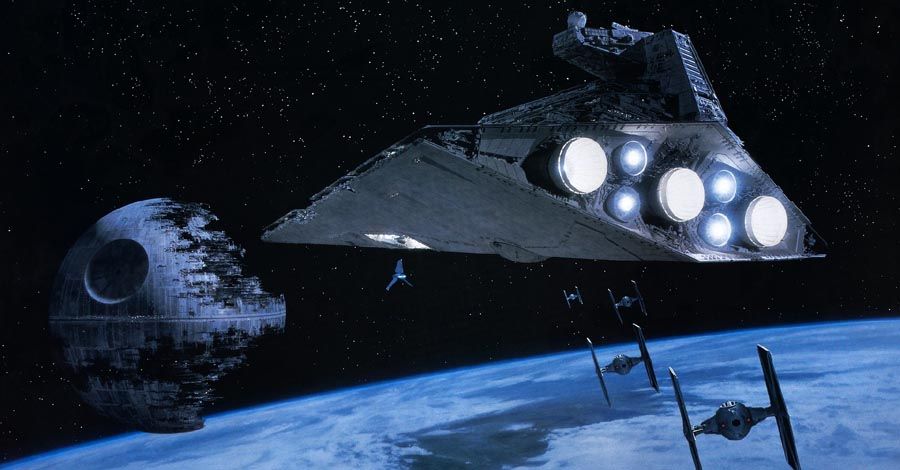When the leaders of the Rebel Alliance in Star Wars plotted the defeat of the Galactic Empire, they probably should've consulted a few economists first -- or at least a money-minded Hutt. It turns out the destruction of not one but two Death Stars would not only bring an end to the iron-fisted (and surprisingly wrinkly) rule of Emperor Palpatine, it would also lead to the collapse of the Galactic economy.
In his new case study titled "It’s a Trap: Emperor Palpatine’s Poison Pill," engineering professor Zachary Feinstein of Washington University in St. Louis concludes the fallout from the Battle of Endor would've been "catastrophic" to the galaxy far, far away, requiring an estimated bailout of somewhere between $690 quintillion and $920 quintillion to stave off complete financial collapse.
Yes, quintillion, with 18 zeros.
Using the $17.5 billion price tag of the Navy supercarrier U.S.S. Gerald R. Ford as a basis, Feinstein figures the first Death Star cost $193 quintillion, while the second rang up $419 quintillion. Where did Palpatine get all of that money for his twin boondoggles? Largely through loans, presumably?
Feinstein assumes half of the debt from the construction of the first Death Star had been paid off by the time of the Battle of Endor, and that Palpatine had been otherwise fiscally conservative. However, the destruction of both space stations within the span of four years, coupled with the collapse of the central government that left behind unpaid debts, would have been enough to sink the $4.6 sextillion (that's 21 zeros) Galactic economy.
“The outlook appears very grim for the common Imperial citizen,” Feinstein said. “I think it is unlikely the Rebel Alliance could have found the political will and financial resources to provide the necessary banking bailout until it is too late. It may be that the Force is awakening 30 years after the events of Episode VI because of the economic forces at play."

